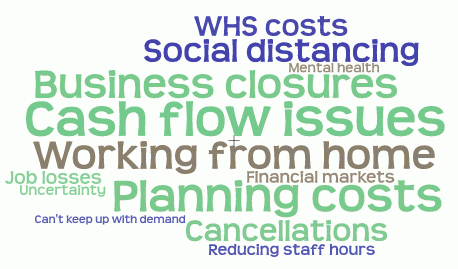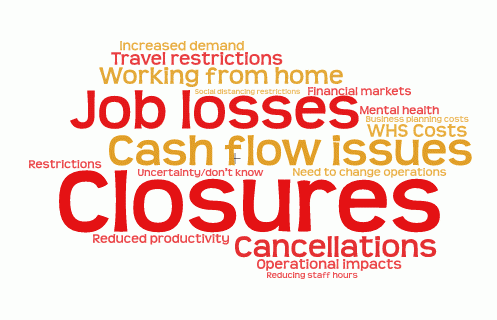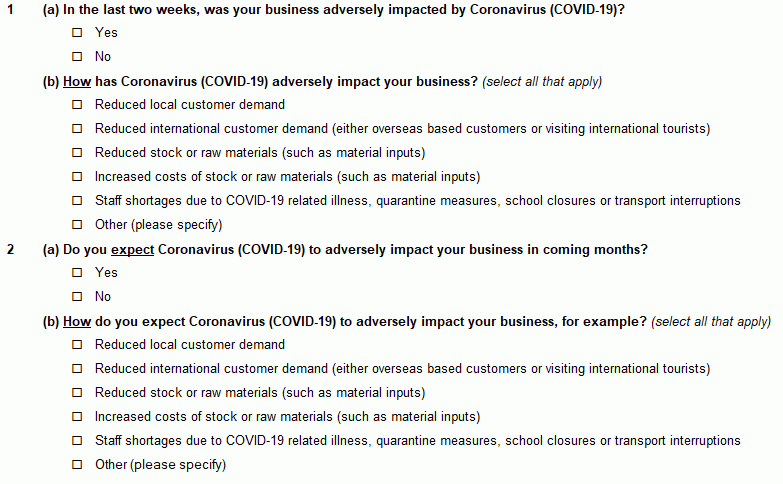About this issue
This release forms part of the suite of additional products that the ABS is producing to measure the economic impact of the COVID-19 coronavirus.
This publication provides information on the prevalence and nature of adverse impacts from COVID-19 experienced by businesses operating in Australia in mid-March 2020.
A sample of 3,000 businesses was selected for this survey, with a response rate of 41%.
Data collection commenced on 16 March and was finalised on 23 March. The Australian Government's announcement of Stage 1 Restrictions on social gatherings were announced on the 22 March.
The ABS is committed to future collection of data to measure the business impacts of COVID-19. Any future information collected will evolve to maintain relevance in a changing environment.
Incidence of adverse business impacts
Businesses reported whether they were adversely impacted by COVID-19 in the previous two weeks and if they anticipated adverse impacts in the coming months.
Approximately half of Australian businesses (49%) had experienced an adverse impact as a result of COVID-19 during the previous two weeks and 86% of businesses expected to be impacted in future months.
Over three quarters of businesses in Accommodation & food services (78%) reported that they had experienced adverse business impacts in the previous two weeks and 96% anticipated impacts over the coming months.
By contrast, businesses in Professional, scientific & technical services (21%), Electricity, gas and water supply (34%) and businesses in Mining (37%) were the least likely to have been adversely impacted by COVID-19 in the previous two weeks.
Nature of business impacts
A reduction in local demand was the most common impact reported for the previous two weeks (82%) and was also the most common impact expected in coming months (81%).
Of impacted businesses, over a third had experienced staff shortages (36%) and 59% expected to experience staff shortages in coming months.
Thematic representation of business sentiments
A word cloud is a collection words depicted in different sizes. The bigger and bolder words reflect the more common themes identified by businesses as an additional impact due to COVID-19.
Experienced impacts of the last two weeks
Image

Description
Expected impacts in coming months
Image

Description
Data collection
Data was collected from 1,217 businesses through a telephone based survey, conducted between 16 and 23 March 2020. These businesses form a sub-sample of those included in the March quarter 2020, Business Indicators Survey.
When interpreting these results, please note:
- Response rates are significantly lower than typical ABS collections (41%).
- Non-response may be related to whether businesses are adversely impacted by COVID-19. If this were the case there is potential for systematic bias in these estimates that weighting procedures would not correct for. In particular, estimates of the prevalence of adversely impacted businesses may be an underestimate if businesses have typically not responded because they are impacted by COVID-19.
